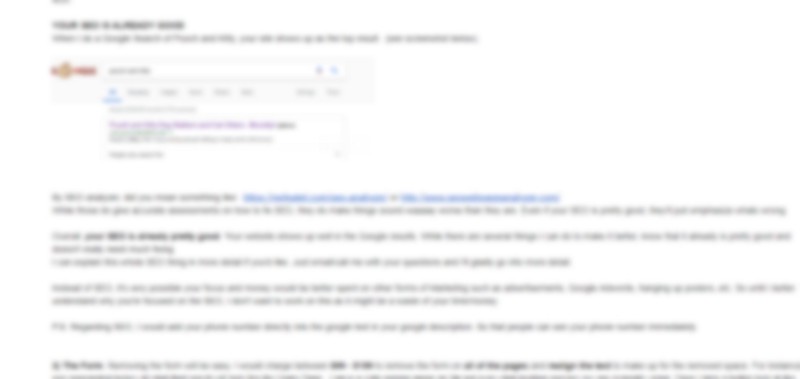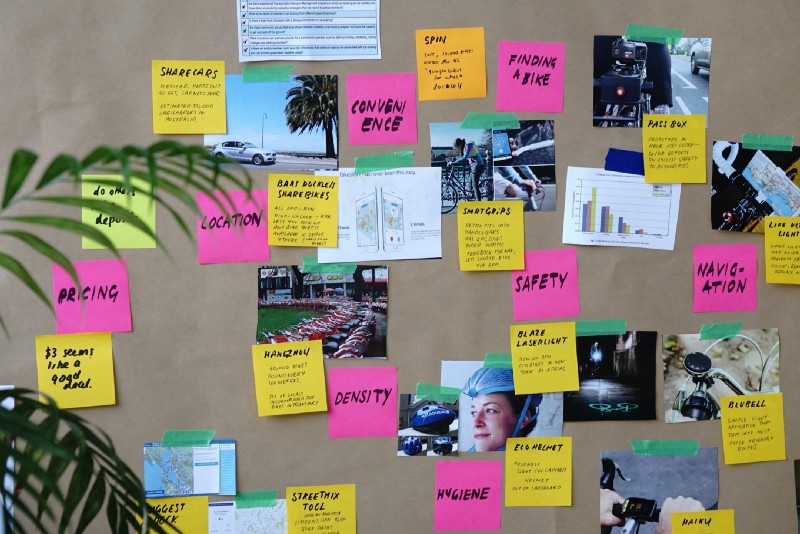By Moshe Siegel
Clients are in love with their own ideas. When I say ‘client’ I mean the person or team to which you report. This may be your supervisor, boss, customer, or project manager. For simplicity, we’ll refer to that person as your client. That person will get more excited about their own idea than anything else.
This boils down to: if you’re working on behalf of someone, then that person’s opinions must in everything you do.
I specialize in making websites. For me, good web design is when your clients’ feel they’re responsible for all the great ideas every step of the way. The more things your clients feel they can take credit for, the better off you are.
Your clients need to feel that their input is very useful — this is a core human need. Not caring or asking for your clients’ input will lead to them feeling apathy for whatever you produce. It’s an easy mistake to make. I often lose clients because of it. It happens whenever I insist and insist on prescribing my own solutions. In fact, here’s an embarrassing story about when I lost a potential customer due to my prescribing.
Alienating a client via too much prescribing
Some time ago, when I was first starting out at web design, I received an email from a potential client. It was from a puppy dog-sitting service. They wanted minor website fixes regarding their SEO content and wanted me to remove a form. This simple stuff would have taken me less than an hour to fix.
I started typing up a reply asking if we could speak and go over what they wanted. Then I started thinking about how desperately I wanted my first paying client. So I switched things up and began making my email as comprehensive as possible. I added more details about how SEO works and how it relates to the site. I mentioned a few possible ways of removing the form and how the final result should look.
And then I started thinking, I really wanted my first paying client. What if I didn’t say enough? So then I added more details. I sent her a final email of 375 words. 375!!

I never got a reply back. At first, I was annoyed. I spent all that time typing such a long email and never heard back! But after some time passed, I cooled down and began realizing that maybe my email was a bit too long. But I still didn’t understand why that was such a problem. To find out, I went to an NYC freeCodeCamp Coffee and Code and spoke to one of its most active members, Michael Semko, a veteran web design freelancer.
Michael explained to me that my email broke a core rule of web design. Working with clients must be a back-and-forth conversation. My too long email was all my ideas. It had no input from the client whatsoever. Because my email was a solution that came from zero customer input, I and my website skills were rejected. Which yields the question: what should my email have said?
Michael explained that the easiest way to get a customer’s input is via a discussion over coffee, Skype, or a face-to-face conversation. He said the core message of my email should have been that I can get the job done and to request some sort of 1-on-1 discussion to go over the details. It’s really that simple: “Hey there, I can get the job done. Could we have some sort of discussion to go over the details? How about at…”.
And it’s during that conversation, via a back-and-forth discussion, that you decide together what the client wants, go over pricing, and try to lock in the deal, etc.
A cornerstone of a successful meeting is if the client feels they were listened to, understood, and that they can take credit for the final product. Face-to-face you can show your clients sample web designs on-screen and get their immediate feedback. That power simply is not possible via email.
It seems easy to avoid prescribing. Know that under some specific scenarios, its all too easy to fall into the trap.
Desperation increases prescribing
With my too-long email, I prescribed because I really wanted the business. I had zero paying customers at the time. I was desperate. And because I wanted it so bad, I tried to show ‘how smart I was’ and began prescribing and prescribing and prescribing.
Be aware that whenever you really need something, the more likely it is that the beast of prescribing will rear its ugly head. When desperation enters the picture, then prescribing becomes all the more likely.
Sometimes, I start prescribing simply because I want the good feeling of ‘helping someone out.’ Because I want to feel that I’m being helpful, if I meet someone else learning JavaScript, I’ll often just launch into a rant prescribing all sorts of good websites and resources that I found helpful for learning JavaScript. This sort of barrage often wastes the other person’s time and alienates them. As mentioned previously, it really should be a 1-on-1 back and forth discussion where they feel they can take credit for all the great ideas that took place.
In conclusion, successful web design involves allowing your clients to feel that their input and ideas are guiding everything that is taking place. It’s particularly easy to start prescribing when you’re desperate. So watch yourself extra carefully in those circumstances. The more credit your clients feel they can take, the more they’ll love the final design. So if you’re working on behalf of someone, then that someone’s opinions must be in everything you do.
